Family : Sciaenidae

Text © Giuseppe Mazza

English translation by Mario Beltramini
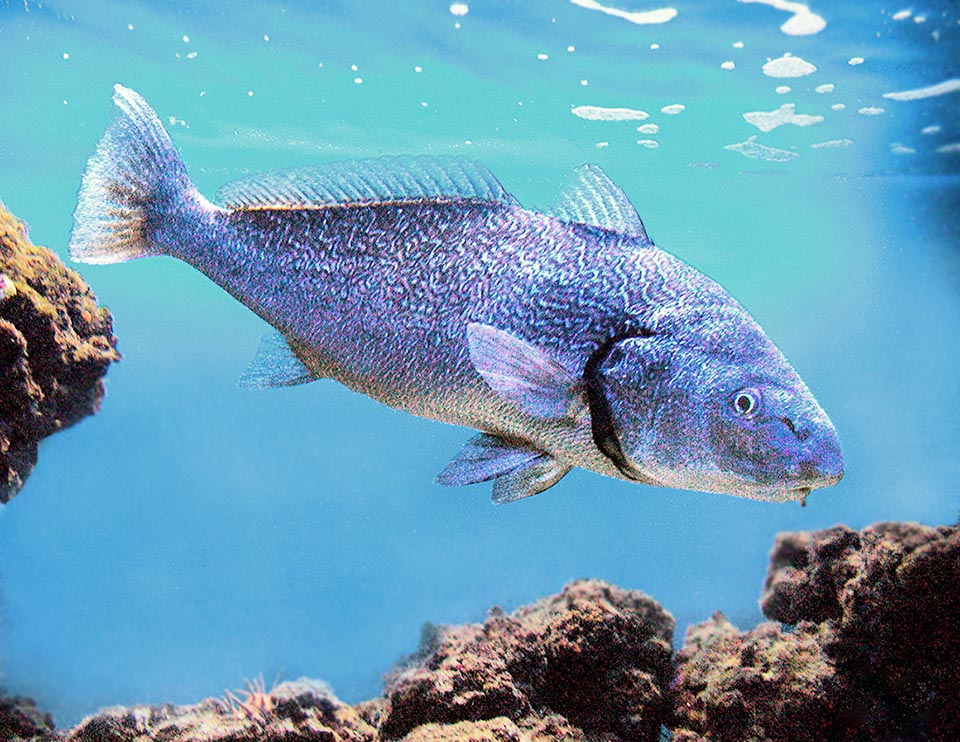
Difficult to observe, mimetic as it is and rapid in movements, Umbrina cirrosa lives in the Mediterranean, Black Sea included, and the Atlantic coast from Brittany to Morocco © Giuseppe Mazza
The Shi drum (Umbrina cirrosa Linnaeus, 1758) belongs to the class of the Actinopterygii, the ray-finned fishes, to the order of the Perciformes and is inserted, like the Brown meagre (Sciaena umbra) in the family of the Sciaenidae, present in all oceans with about 70 genera and 300 species.
The name of the genus Umbrina originates from the Latin “umbra”, shade, ghost, because it is a mimetic animal and quick in its movements who suddenly appears and disappears.
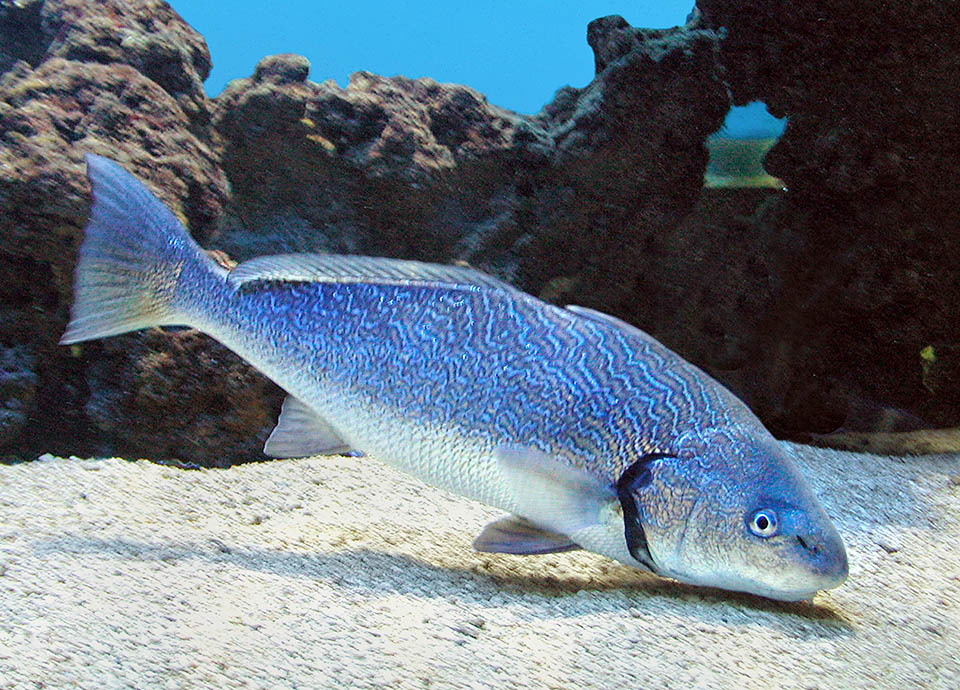
Through Suez Canal it has finally reached the Red Sea waters, and is one of the rare fishes who has done the opposite route to that of the invasive Lessepsian species © Giuseppe Mazza
The specific term cirrosa, always in Latin, from “cirrus”, curl, curled lock of hair, with reference to the odd drawings on the sides.
Zoogeography
It is present in the Mediterranean, Black Sea included, and, past Gibraltar Strait, along the European and African Atlantic coasts, up to Brittany and Morocco. In Italy, it has become rare in the Ligurian and northern Tyrrhenian Seas.
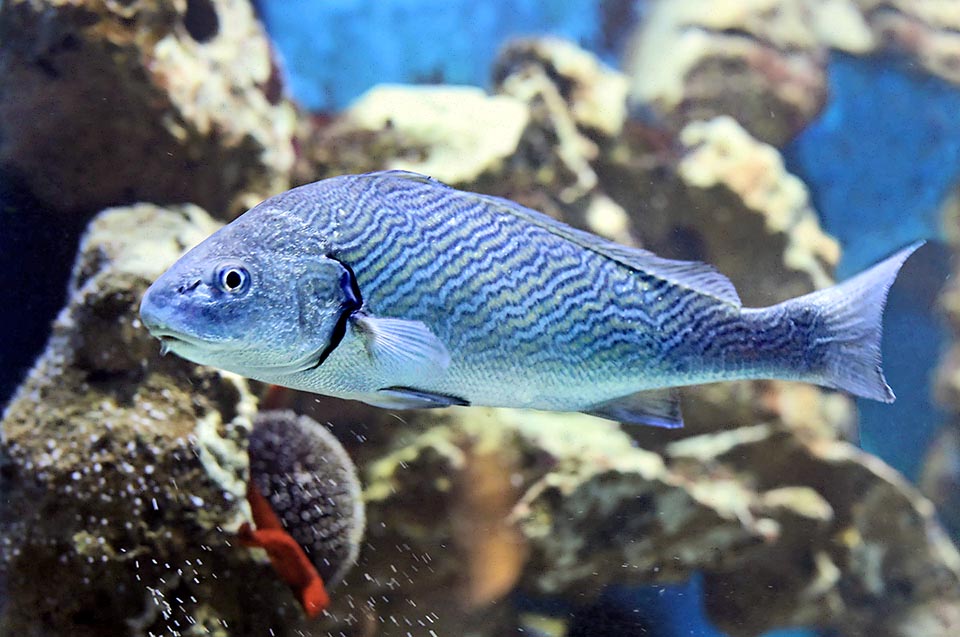
It exceptionally reaches 12 kg and 1 m of length, but usually does not exceed 70 cm. Typical the oblique traits of the livery and the black band close to the operculum © Vladimir Tkalčić
Through the Suez Canal Umbrina cirrosa is nowadays found even in the Red Sea waters, and is one of the few fishes who has done the reverse route of the increasing invasive species of the Mediterranean, called Lessepsian, from the name of the engineer Ferdinand de Lesseps who planned and followed the realization of the Canal.
Ecologia-Habitat
It lives solitary or in small sedentary schools along the coasts, on the sandy shallows, but often also on gravelly structures among the rocks.
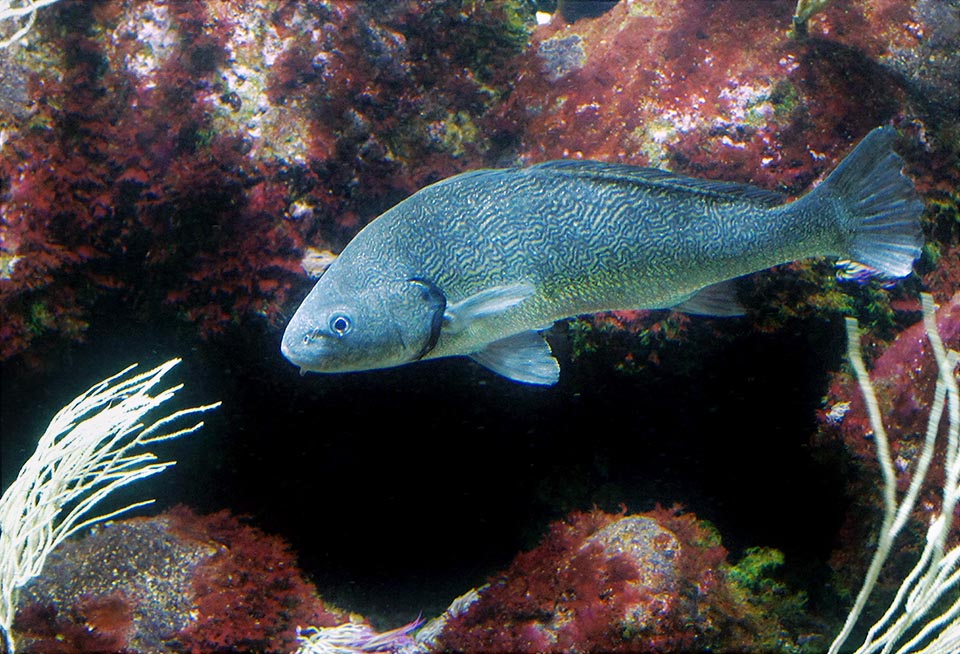
Can reach 100 m of depth but is mostly sedentary along the coasts on the shallow sandy, gravelly or rocky sea beds, and does not disdain the brackish mouths waters © Paul Moine
It is not affected by brackish water and, therefore, it is found also in the lagoons and the estuaries. It may go down up to 100 m of depth.
Morpho-physiology
It can reach, exceptionally, 1 m of length and 12 kg of weight, but, usually, it does not exceed the 70 cm.
The body, compressed on the sides, is elongated with a much arcuate profile towards the head, whilst the belly is straight. The mouth is placed at the bottom, with a short barbel under the chin. The teeth are tiny, placed in bands on the jaws and on the pharyngeal bones.
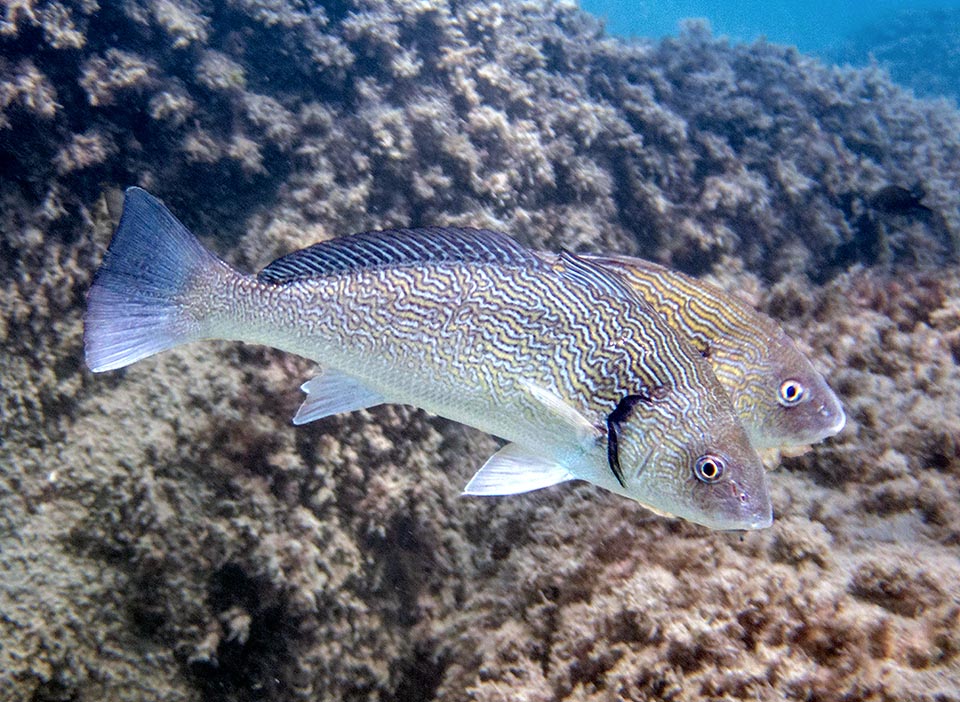
It feeds rooting alone or in small schools looking for worms, mollusks, crustaceans and echinoderms © Francesco Caroli
The opercula show modest flat spines. The dorsal fns are two.
The first, high and triangular with spiny rays, and the second, lower, and elongated to almost reach the tail, which has an unusual profile, slightly concave only in the upper part, more evident in the adults.
The anal is short and almost triangular, and modest are also the pectoral and the pelvic ones, which we find in ventral position.
The silvery livery is unique indeed, with yellow oblique bands blue-violaceous edged. Behind the operculum is located a vast black border.
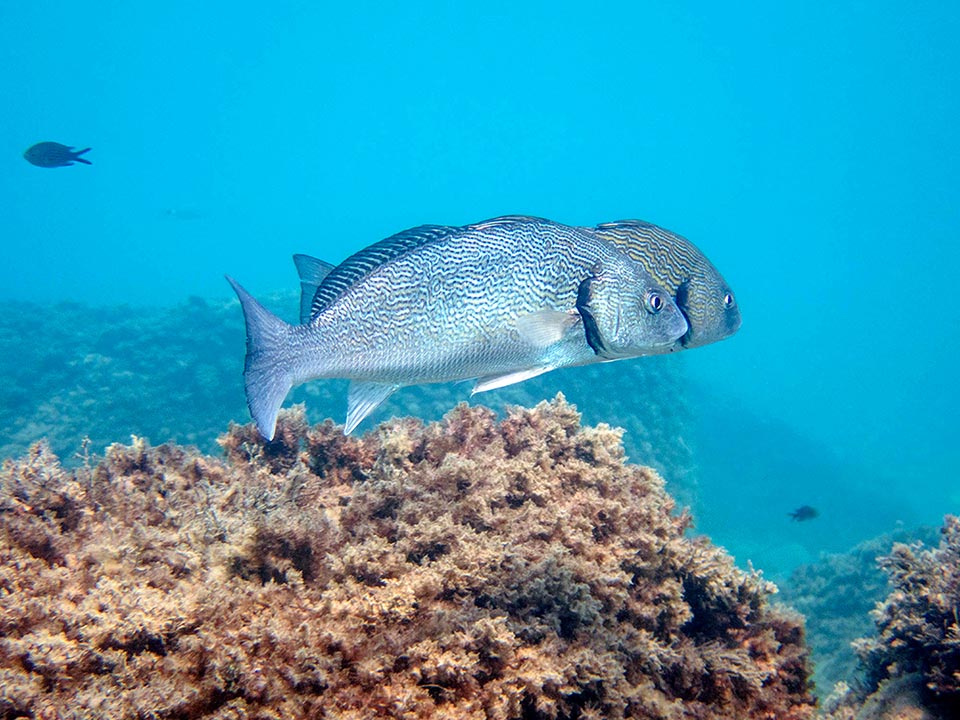
Reproduction occurs between May and July, with males fecundating thousands of small pelagic eggs laid in group by the females © Francesco Caroli
Ethology-Reproductive Biology
It nourishes of molluscs, worms, crustaceans and echnidoerms, rooting in small schools the seabed.
The shi drums are able to reproduce once reached the 37-40 cm. The females, synchronized, lay in group between May and July, and the only 0,8 mm pelagic eggs are at once fecundate by the males. The young, up to 3 cm, are blackish with white fins.
Attempts of breeding are underway, as its flesh is very valuable and demanded.
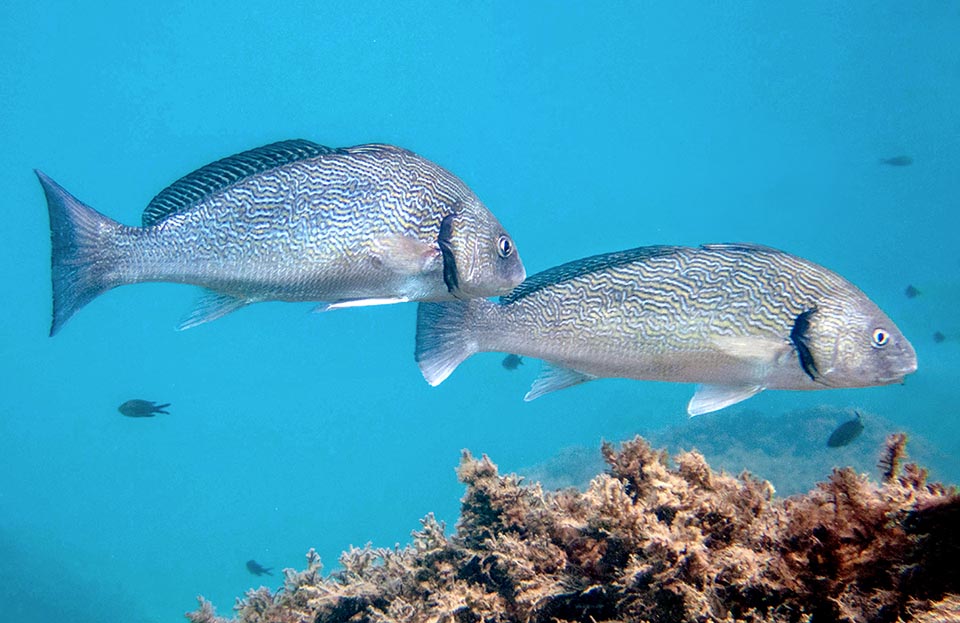
Juveniles could reach the age of 18 years, but Shi drum is too much fished due to the excellent flesh and already appears as “Vulnerable” in the endangered species Red List © Francesco Caroli
The index of resilience of the species is average, with a possible doubling of the populations in 1,4-4,4 years, and the juveniles could, theoretically, reach the age of 18 years, but Umbrina cirrosa is too much fished, with a fishing vulnerability index of 43 on a scale of 100, and already appears as “Vulnerable” in the Red List of the endangered species.
Synonyms
Asperina improvisa Ostroumoff, 1896; Cheilodipterus cyanopterus Lacepède, 1801; Coracinus boops Pallas, 1814; Perca umbra Lacepède, 1802; Sciaena cestreus Gronow, 1854; Sciaena cirrosa Linnaeus, 1758; Sparus coracinus Asso, 1801; Umbrina cirrhata Linnaeus, 1758; Umbrina vulgaris Cuvier, 1830.
→ For general information about FISH please click here.
→ For general information about BONY FISH please click here
→ For general information about CARTILAGINOUS FISH please click here.
→ To appreciate the BIODIVERSITY of BONY FISH please click here.
→ To appreciate the BIODIVERSITY of CARTILAGINOUS FISH please click here.
